The Bitcoin Halving is a highly significant event that takes place every four years. During this event, the mining reward for verifying transactions on the Bitcoin blockchain is reduced by half. The upcoming 2024 Bitcoin halving is eagerly anticipated and is expected to have a positive impact on the long-term value of Bitcoin. This is because it will reduce the supply of new Bitcoin entering circulation. While the price of Bitcoin can be unpredictable, halvings are generally viewed as bullish events that lead to a short-term price spike. They also serve as an indicator of the scarcity of new Bitcoin entering the market.
The upcoming Bitcoin Halving of 2024 will indeed cause significant changes in the crypto market. With fewer new coins entering the market, an increase in transaction fees, and a decrease in the total number of Bitcoin ever to be mined, the halving will have far-reaching implications. Whether you’re a seasoned cryptocurrency trader, correlation trading and news based trading lover, or just starting, understanding Bitcoin Halving is crucial to navigating the ever-changing landscape of the crypto market. Here at Finstel, we’re going to take a closer look at this event. Stay with us.
What Is a Bitcoin Halving?
Satoshi Nakamoto’s introduction of Bitcoin in 2009 marked the beginning of a revolutionary new approach to finance. At that time, the reward for mining a block was 50 Bitcoins. However, this reward is cut in half every four years, gradually reducing the Bitcoin reward from 50 in 2009 to 25 in 2013, 12.5 in 2017, and then 6.25 in 2021, halving the reward each time. These halvings are part of Bitcoin’s predetermined supply schedule and will continue until the last Bitcoin is mined in 2140, when the block reward reaches zero.
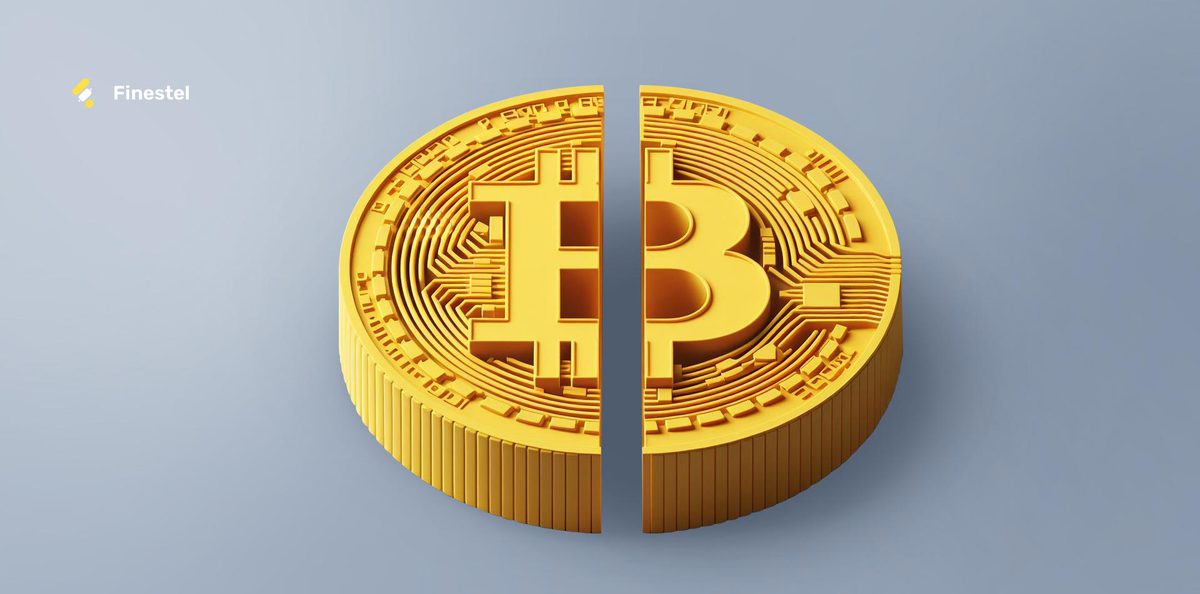
The halvings are critical to ensuring the scarcity of Bitcoin and its value remains intact. With a finite supply of only 21 million Bitcoin, the halvings help to maintain the cryptocurrency’s value by reducing the supply of new Bitcoin entering circulation. While the halvings may impact the cryptocurrency market in the short term, they are a crucial element of Bitcoin’s design. They are essential to its usefulness as a decentralized form of money with a predetermined and scarce supply.
Despite the potential short-term impact of the halvings on the cryptocurrency market, they are also seen by many as a positive development for Bitcoin. By reducing the mining reward every four years, Bitcoin’s supply is kept in check, and its value is preserved for future generations to use and enjoy. The halvings help to ensure that the scarcity of Bitcoin remains intact, making it a unique and valuable asset that is increasingly seen as a legitimate store of value and investment opportunity.
Find out the latest Binance Listings, they may be the best crypto to buy now.
The History of Bitcoin Halving and Its Impact on the Market
The first Bitcoin Halving took place in 2012. At the time, the reward for solving a block was 50 Bitcoin. After the halving, the reward of each mined block has split into 25 Bitcoin. As a result, the value of Bitcoin in USD began to rise. Since the first halving, two more have occurred in 2016 and 2020.
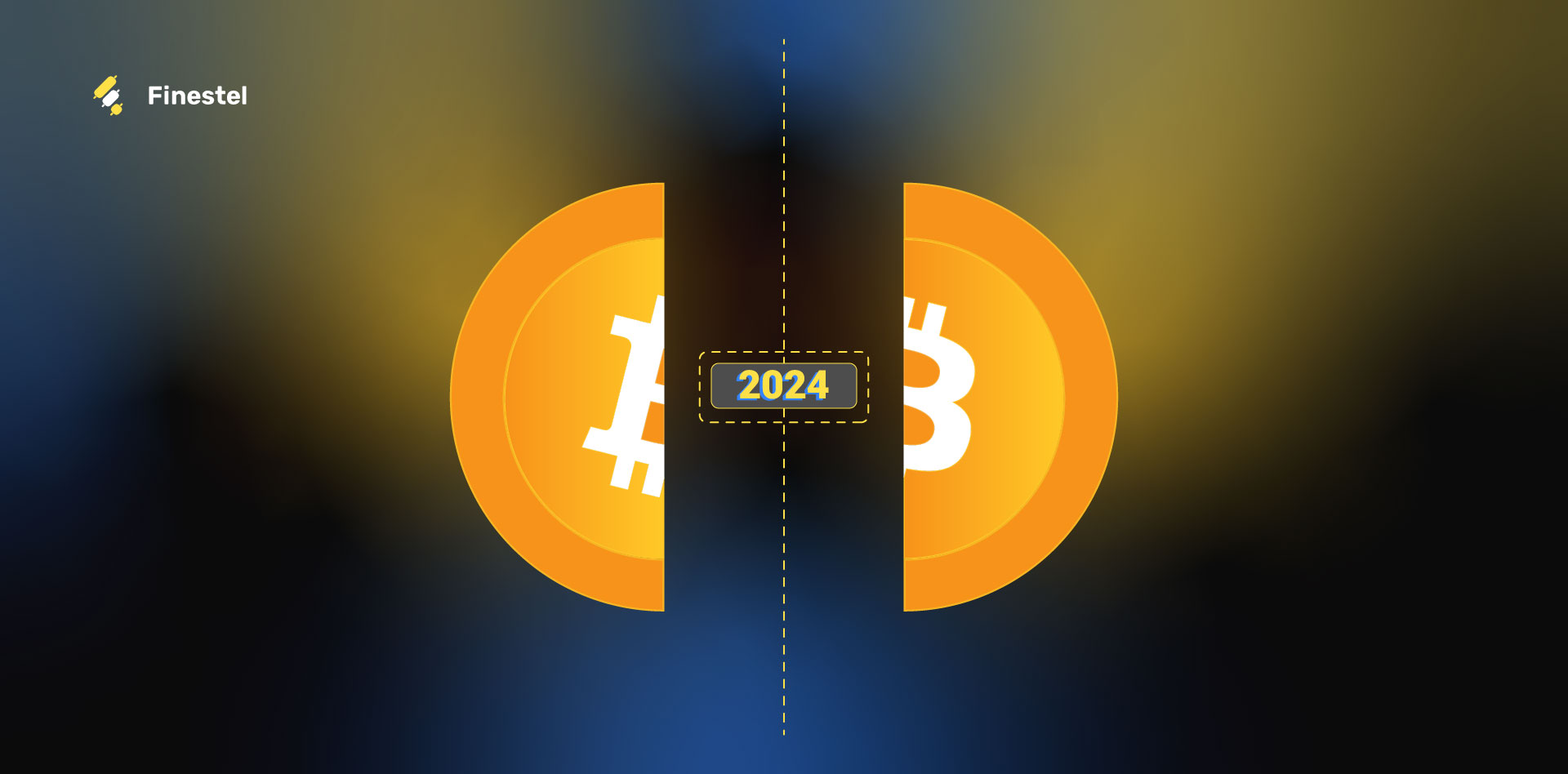
The reward was reduced from 25 to 12.5 Bitcoin in 2016 and again this year from 12.5 to 6.25 Bitcoin. Each halving has caused a sudden spike in the price of Bitcoin, followed by corrections. In April 2020, the value of Bitcoin skyrocketed to over $10,000 following the news of the 2020 Halving.
| Date of Halving | Block Height | Block Reward | Total Bitcoin SUPPLY MARKET | Market Impact |
|---|---|---|---|---|
| November 28, 2012 | 210,000 | 50 BTC | 10,500,000 BTC | The price increased from $12 to $1,150 |
| July 9, 2016 | 420,000 | 25 BTC | 15,750,000 BTC | The price increased from $650 to $20,000 |
| May 11, 2020 | 630,000 | 12.5 BTC | 18,375,000 BTC | The price increased from $8,000 to $60,000 |
| 2024 | 840,000 | 6.25 BTC | 19,687,500 BTC | TBD |
What Is the Reason for Bitcoin Halvings?
Bitcoin’s deflationary structure, which is hardcoded, is highly commendable. More than 91% of the total bitcoin supply has already been released into the market, and it is projected that by 2030, 98% of the maximum supply will have been generated. Halvings are an essential aspect of bitcoin’s software protocol, and they involve reducing block rewards by half, which gradually decreases the issuance of new BTC into the market. This is a brilliant method of controlling inflation through programming.
Why Are the Halvings Occurring Less Than Every 4 Years?
Halvings, which refer to the reduction of block rewards in the Bitcoin network, are programmed to occur approximately every four years. However, due to the nature of the Bitcoin protocol, the actual time between halvings can vary. This is because the Bitcoin network adjusts the difficulty of mining every 2016 block, which can cause the time between blocks to fluctuate.
If the time between blocks is shorter than 10 minutes, the halving event can occur sooner than expected. Conversely, if the time between blocks is longer than 10 minutes, the halving event can occur later than expected. Therefore, the time between halvings can be less than four years or more than four years, depending on the rate of block production.
BTC Halving Chart
The halving chart provides a good overview of the events and their respective dates. It is important to keep a close eye on the market in the weeks and months leading up to the halving to understand how the event will affect the market.
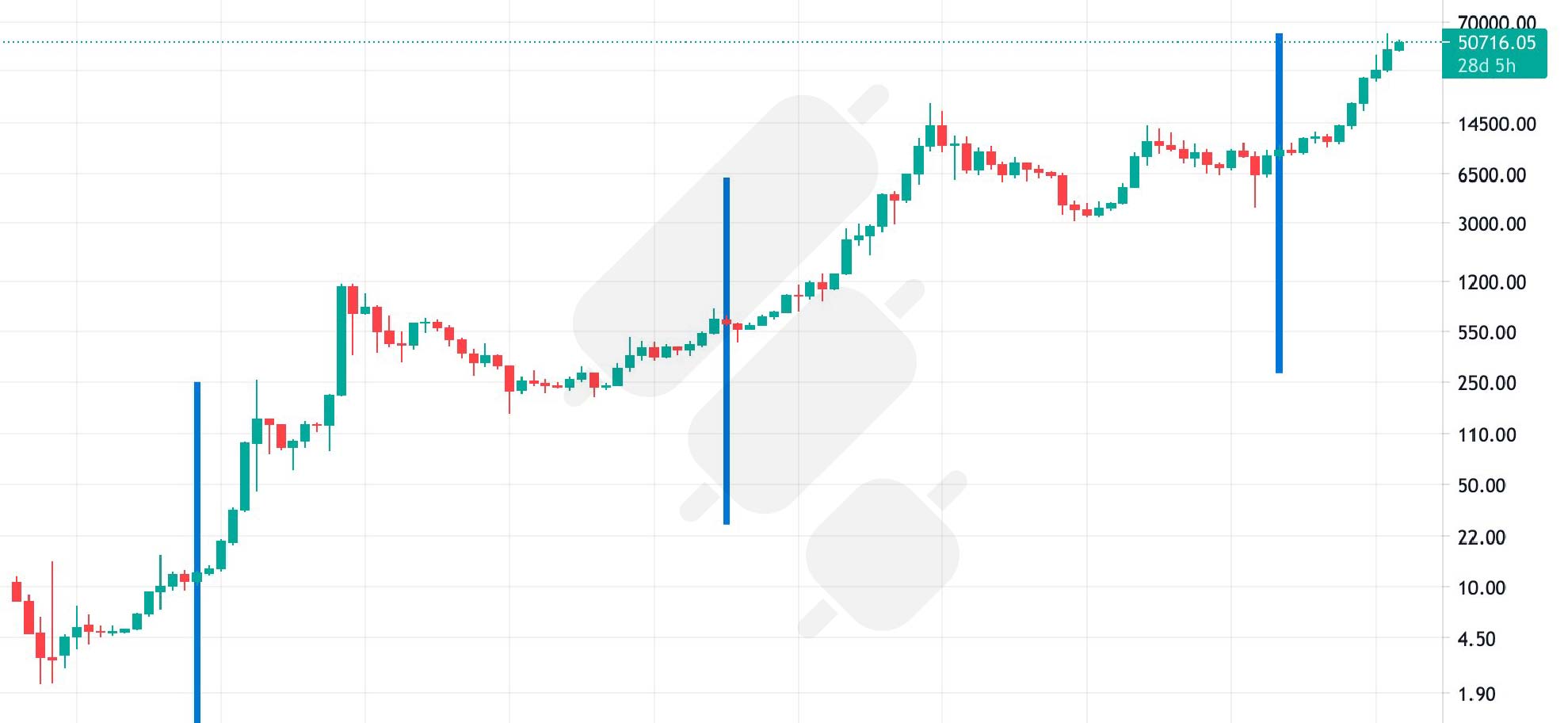
Looking Forward to the Next Bitcoin Halving in 2024
The Bitcoin community eagerly anticipates the next halving, scheduled in May 2024. This event, which occurs every four years, has historically been a major catalyst for an increase in Bitcoin’s price, and many experts are predicting that the next halving will be no exception. Some researchers have suggested that the Bitcoin price could hit $100,000 in the run-up to the halving and possibly even higher afterward.
The last Bitcoin halving, which occurred in May 2020, saw the price of Bitcoin climb significantly in the months following the event. This trend has been observed after each halving, as the reduced mining rewards reduce the supply of new Bitcoin entering circulation, thus helping to maintain the cryptocurrency’s scarcity and value. The next halving is expected to have a similar impact on the cryptocurrency market, with many investors and traders preparing for a surge in demand for Bitcoin.
In addition to its impact on Bitcoin’s price, the halving will also have significant implications for the mining of new Bitcoin and the cost of electricity. The reduced mining rewards will make it more difficult and expensive for miners to produce new Bitcoin, which may lead to increased competition and consolidation in the mining industry. These effects will likely ripple throughout the broader crypto markets, with knock-on effects on other cryptocurrencies and related industries. Overall, the next Bitcoin halving will be an exciting time for the cryptocurrency community, with many eagerly anticipating its impact on the future of finance.
What to Expect from Bitcoin Halving 2024
The price will also increase, assuming the demand for Bitcoin will be the same as the current trend. According to assessments, the number of demanded Bitcoins will increase. It is because more people will be familiar with the market until then. Conversely, Hodlers’ enthusiasm to hodl even more Bitcoins dramatically increase. More companies will adopt Bitcoin, and perhaps more countries declare Bitcoin as legal tenders till 2024. All increase people’s thirst to own more Bitcoin. However, there are no guarantees that the market will turn in the opposite direction and it goes to zero.
If the price rises, more miners will join the network, and as a result, the world requires more electricity to power machines. It might result in a significant rise in the electricity bill costs or adopting more clean energy powers, and we witness off-grid mining farms as well. It is not counterintuitive that the increase in the Bitcoin price becomes leverage to push the altcoin market to an upper level.
Evaluating the Bitcoin Halving: The Good and The Bad
The Bitcoin halving is a critical event with positive and negative implications for the cryptocurrency market. While the halving helps to ensure the scarcity and value of Bitcoin over time, it can also lead to increased volatility and centralization in the mining industry. By carefully evaluating these factors, investors and traders would know to decide how to approach the halving and its possible impact on the future of finance.
- The Bitcoin Halving is a fundamental aspect of Bitcoin’s software protocol and helps control inflation programmatically.
- It reduces the issuance of new Bitcoin into the market, which can increase the long-term value of Bitcoin.
- This event is generally viewed as a bullish event that leads to a short-term price surge and highlights the scarcity of new Bitcoin entering the market.
- The Halving occurs every four years, providing a predictable event for investors and enthusiasts to anticipate.
- Halving can lead to a reduction in mining rewards, which can make mining less profitable for miners.
- It can also result in a decrease in the hash rate, which is the computing power used to secure the Bitcoin network.
- The price of Bitcoin can be unpredictable, and there is no guarantee that the Halving will result in a price increase.
- It can lead to increased transaction fees as miners prioritize transactions with higher fees to compensate for the reduction in mining rewards.
How Bitcoin Halving Affects Mining Rewards
The reduction in mining rewards can have a significant impact on the profitability of mining. Miners who rely on mining rewards as their primary source of income may find it less profitable to continue mining after the Halving. This can lead to a decrease in the number of miners on the network, which can result in a decrease in the hashrate and potentially make the network less secure.
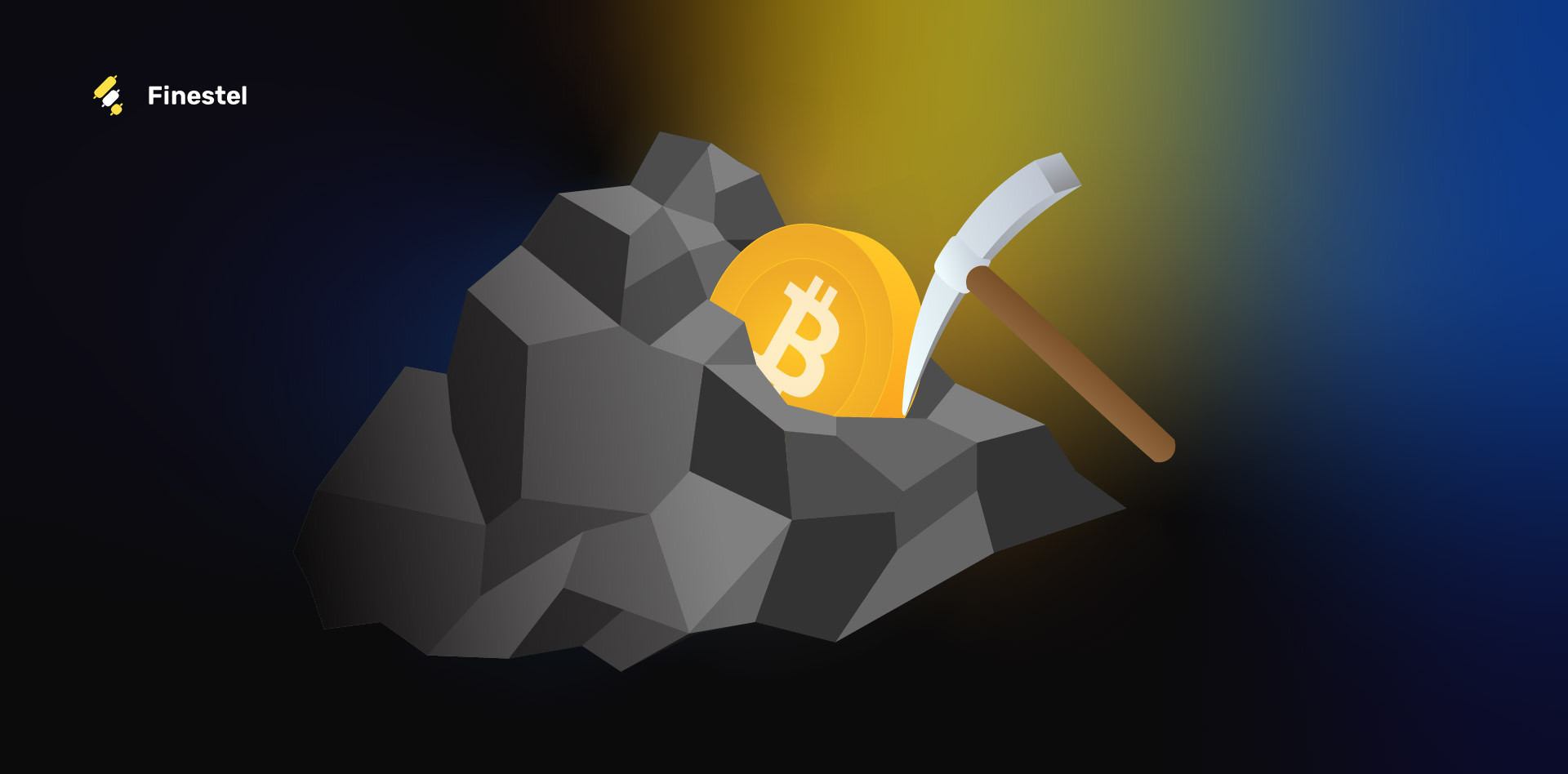
To compensate for the reduction in mining rewards, miners may prioritize transactions with higher fees to earn more revenue. This can lead to increased transaction fees for users who want their transactions to be processed quickly.
The Future of Bitcoin Mining After Halving 2024
After the 2024 halving, new Bitcoin in circulation will reduce to half. This trend will continue every four years until 2140, directly impacting the reward miners receive for their efforts. Reducing the block reward from 6.25 BTC to 3.125 BTC will significantly decrease the amount Bitcoin miners can earn.
The future of Bitcoin mining after the halving in 2024 is hard to predict, but many believe the event will result in a healthier and more secure Bitcoin network. The reduced block reward is expected to reduce the number of miners competing for rewards. This may lead to increased network decentralization, making it more difficult for malicious entities to gain control of the Bitcoin blockchain.
The Future of Bitcoin After Halving 2024
Some analysts claim that the halving could cause a dramatic surge in Bitcoin’s price due to increased scarcity. Many miners may sell their reduced rewards at a higher price, leading to further appreciation. This appreciation could attract more investors, creating a “virtuous circle” of high demand and prices.
The 2024 halving could lead to the opposite effect, with prices dropping as miners are forced to sell their reduced rewards at lower prices. This could lead to a decrease in the hash rate of the Bitcoin network, reducing the network’s security and potentially making it vulnerable to attack. Furthermore, miners may be forced to sell their rewards at a loss, which could lead to further drops in the price.
The truth is, what will happen after the 2024 halving has yet to be determined. The effects of the halving will depend on many factors, such as the demand for Bitcoin, the mining costs, and the economy’s overall health.
Future Halvings to Come
Halvings will continue approximately every four years until a miner mines the last single Bitcoin, predicted to be a day in 2140. The table below shows the reward of each mined Block from the Genesis to the 1680000th Block in the Bitcoin blockchain.
| Halving Round | Date | Block Number | Blocked Reward | Price |
|---|---|---|---|---|
| BTC Lunch | jan 3, 2009 | Genesis | 50 BTC | N/A |
| First | Nov 28, 2012 | 210.000 | 25 BTC | 12.35$ |
| Second | Jul 9, 2016 | 420.000 | 12.5 BTC | 650$ |
| Third | May 11, 2020 | 630.000 | 6.25 BTC | 8821$ |
| Fourth | ~ 2024 | 840.000 | 3.125 BTC | — |
| Fifth | ~ 2028 | 1.050.000 | 1.5625 BTC | — |
| Sixth | ~ 2032 | 1.260.000 | 0.78125 BTC | — |
| Seventh | ~ 2036 | 1.470.000 | 0.390625 BTC | — |
| Eighth | ~ 2040 | 1.680.000 | 0.1953125 BTC | — |
What Happens When There Are No More Bitcoins Left?
Bitcoin has a 21M maximum supply of coins that will ever exist. After mining the 21000000th Bitcoin, obtaining a Bitcoin will become incredibly hard. The fixed total supply and lost Bitcoins cause prices to skyrocket due to the limited amount of coins available, and it would become increasingly difficult to acquire a Bitcoin.
Bitcoins are finite, which means a Bitcoin will have an incredibly valuable asset. This could bring a massive influx of wealthy individuals looking to cash in on the scarcity, which could increase prices.
Please note that the Bitcoin network will still be operational after mining the final Bitcoin. It means that the Bitcoin network will resume processing transactions, and miners will still be able to earn rewards. As more people use the Bitcoin network, the demand causes transaction fees to increase. This way, miners will make more money for verifying and validating transactions.
Conclusion
The year 2024 is a momentous time for the cryptocurrency market. In Q1 2024, Bitcoin will go through its third halving event. It is cutting the reward for mining a new block in half. This could have huge implications for the digital currency and the larger crypto ecosystem. It is an effort to reduce the amount of newly created Bitcoin entering the market and slow down the rate of inflation.
This results in a slow but steady currency appreciation as the supply gets more scarce. Halvings have had a major impact on the price of Bitcoin, Leading to a significant jump in the price in short. The halving event is also important for miners, as it reduces the block’s reward. The lower reward might cause miners to leave and leave the market for prominent mining farms.
FAQ
When is the next Bitcoin halving?
We expect that the next Bitcoin halving occur in the year 2024. Based on the block production rate estimations, the next Bitcoin halving will be in April 2024.
What will BTC price be after 2024 halving?
Regardless of the price of BTC after the halving, halving affects the price. It is sure to generate a great deal of interest from the crypto community. As the halving date draws closer, only time will tell how it will impact the price of BTC.
When is the 2024 Bitcoin Halving?
Bitcoin halving frequently happens every four years. A few weeks less or more than four years. The next Bitcoin halving will be in April 2024.
When is the last Bitcoin halving?
The total supply of Bitcoin is 21 million units. Miners compete to mine blocks faster and before other nodes in this competition. Once Bitcoin network nodes discover 210000 blocks, bitcoin levels up to a new period. At this stage, each block’s reward is reduced to half. After mining the Genesis block on January 3, 2009, the network halved the block every four years. The data and assessments show that miners will mine the last SAT of Bitcoin in 2140.


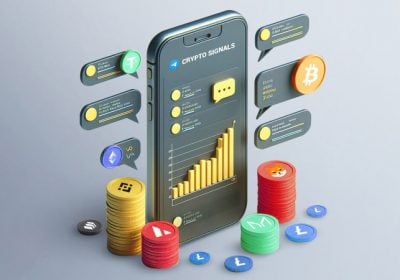


Leave a Reply